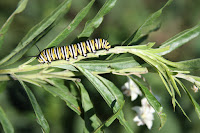Rose Replant Disease Impacts Apples

Science has been applied to the long-observed phenomenon of rose replant issues. There is a report by Dr. David Zlesak at http://www.rose.org/ - Dr. David Zlesak "The mysterious ‘rose replant disease’ or ‘rose sickness’ has puzzled rose growers for years. Nothing specific has been identified as the cause of this phenomenon. When new roses are planted where old roses used to be, they may not grow as well as they would if they were planted in soil never planted with roses. Many suspect that key nutrients may be depleted in soils where roses have been grown for a long time, and as a result, the new roses do not get all the nutrition they need. Additionally, where roses have been grown for years without attention to good soil health, the soil’s structure and general physical properties may have declined — due to compaction and reduced organic matter. The soil may not effectively deliver oxygen, nutrition and water to the roots to support the vigorous growth of new roses.&qu







